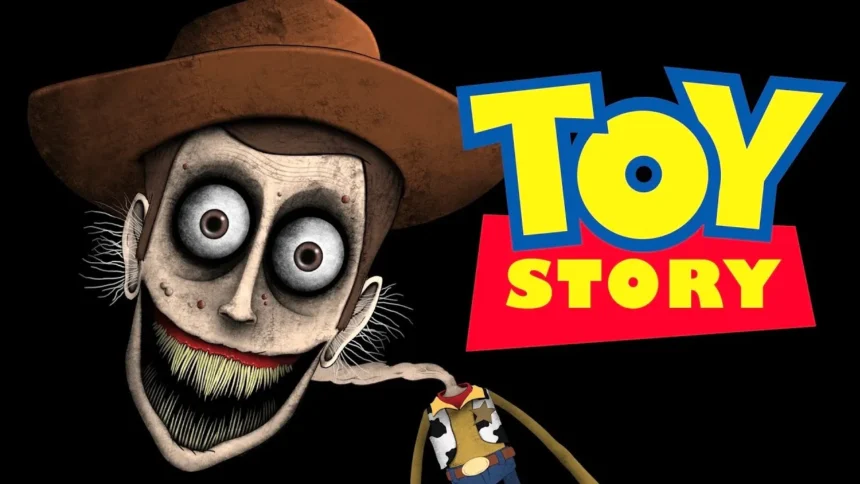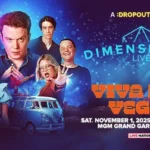Nightmares can come in many shapes and forms. Some are rooted in the fear of the unknown, while others tap into the terrifyingly familiar. Imagine a world where your beloved childhood toys, once full of warmth and joy, turn into nightmarish, malevolent creatures. What if the colorful, innocent figures you once trusted were secretly plotting against you in the dark? This is the premise of a “Toy Story-like horror vivid nightmare,” where the comfort of familiar objects becomes a haunting source of terror.
In this article, we’ll explore what a Toy Story-like horror vivid nightmare looks like, how it taps into primal fears, and why this genre of horror has gained so much attention in recent years. If you’ve ever wondered what it would feel like to watch your favorite toys come to life, only to realize they’re no longer the lovable characters you grew up with, then buckle up. You’re about to dive into a truly unsettling experience.
What Is a “Toy Story-like Horror Vivid Nightmare”?
At first glance, the concept of a Toy Story-like horror vivid nightmare might seem a little far-fetched. After all, how could something as innocent as toys become a source of horror? But as we dive deeper, it becomes clear that there’s more to this concept than meets the eye.
Think of the movie Toy Story. It’s a bright, colorful world where toys come to life when their owners aren’t around. Now, imagine flipping that idea on its head. Instead of friendly, lovable toys, these figures are twisted, haunted, and capable of unimaginable terror. In a Toy Story-like horror vivid nightmare, the toys that once provided comfort and companionship are now the source of deep, psychological fear.
This genre of horror plays on a fear that many people experience—the fear of what is hidden beneath the surface. Toys, with their innocent appearances, represent childhood and innocence. But what if those toys held a darker secret, hidden from the eyes of their owners? This unsettling concept creates a vivid and terrifying nightmare scenario.

The Psychology Behind Toy Horror
To understand why Toy Story-like horror vivid nightmares have such a profound impact on viewers, we need to look at the psychology of fear. Children, particularly, find comfort in their toys. These inanimate objects offer security in a world that can seem overwhelming. When toys take on a life of their own—especially in a horror context—it disrupts that sense of security.
Toys, being objects that children often form emotional connections with, have a special place in the human psyche. They represent safety, familiarity, and affection. When these objects turn malevolent, it creates a jarring and deeply unsettling effect. It’s not just about being scared of monsters or ghosts, but about confronting the horror in the very things that once brought comfort.
A Toy Story-like horror vivid nightmare takes this concept to an extreme. It’s not just about toys coming to life; it’s about them becoming grotesque or sinister. The transformation of something once loved into something dangerous triggers a deep, instinctual fear of betrayal.
Key Elements of Toy Story-like Horror
There are several core elements that make a Toy Story-like horror vivid nightmare so effective:
- Familiarity and Trust: Toys are familiar, comforting items that children trust. When this trust is broken, it adds to the horror. Think of it as if a trusted friend turned against you. The betrayal is emotionally intense.
- Distorted Innocence: The contrast between a toy’s innocent appearance and its dark, twisted actions amplifies the horror. A teddy bear, for example, might seem harmless at first, but in this horror scenario, it could become a puppet master controlling the other toys.
- Dark Atmosphere: The setting is crucial. A child’s bedroom, a playroom, or a toy store—these places, which should be filled with joy, are transformed into eerie, foreboding spaces where the toys begin to move on their own. Imagine walking into a room full of seemingly lifeless dolls that suddenly start to shift and change. This contrast between expected safety and actual danger is a core component of the nightmare.
- Unpredictability: In a Toy Story-like horror vivid nightmare, you never know when a toy will come to life or how it will act. The unpredictability is key to keeping the audience on edge. One moment, everything seems calm; the next, your favorite toy is trying to take you down.
- Vivid Nightmares: The vivid nature of these nightmares is enhanced by the sensory details of the setting. The toys may be colorful and playful in appearance, but their actions are violent, surreal, and chaotic. Their bright colors and cheerful expressions only serve to amplify the horror, making them feel more unsettling.

Popular Examples of Toy Story-like Horror
- Child’s Play (1988): The Child’s Play franchise, particularly the character of Chucky, is a prime example of Toy Story-like horror vivid nightmares in action. A child’s doll becomes a vessel for a malevolent spirit, causing fear and chaos. Chucky, once a beloved toy, becomes a terrifying killer—an excellent example of how innocence can be turned into terror.
- The Puppet Master Series: This horror film franchise introduces a group of sentient puppets that are brought to life by dark forces. These puppets, once designed to entertain, now serve as instruments of death, attacking anyone who crosses their path. Again, it’s the combination of childish innocence with dark, violent actions that makes this series a standout example.
- The Twilight Zone – “Living Doll” (1963): In this classic episode, a child’s toy, named Talky Tina, becomes increasingly malevolent, warning her owner with the chilling phrase, “I’m going to kill you.” The mix of a child’s plaything with a sinister purpose taps into the same fear of betrayed innocence.
- Toy Story (Horror Version): While the original Toy Story is a heartwarming tale, imagine if the toys in Andy’s room weren’t just playful and kind but instead harbored dark secrets. A Toy Story-like horror would flip the script, turning Woody, Buzz, and the gang into terrifying, vengeful toys that become a nightmare for their unsuspecting owner.
The Power of Color in Toy Story-like Horror
One of the most striking elements of Toy Story-like horror vivid nightmares is the use of bright, vibrant colors. Toys are typically colorful, designed to catch a child’s eye. However, in the context of horror, this vibrancy becomes disorienting and even unsettling. The contrast between the colorful exterior and the sinister actions of the toys creates a strong visual and emotional impact.

The Toy Story-like very colorful horror vivid nightmare taps into the unsettling nature of this contrast. Imagine a plush, brightly colored toy that should comfort you, but its unnerving smile and unnatural movements make your skin crawl. The vibrant colors create a false sense of safety, which is then shattered by the toy’s dangerous behavior.
Conclusion
A Toy Story-like horror vivid nightmare plays on the fear of innocence gone wrong. It takes the things we once trusted—the toys of childhood—and twists them into malevolent beings. This genre of horror taps into deep, primal fears: the fear of betrayal, the fear of losing control, and the fear of something once safe becoming a source of danger.
So, why are these nightmares so powerful? Is it because they force us to confront the terrifying possibility that our most cherished memories could be hiding something darker? Could the toys we once loved really come to life, and if so, would they be our friends or our worst enemies?




